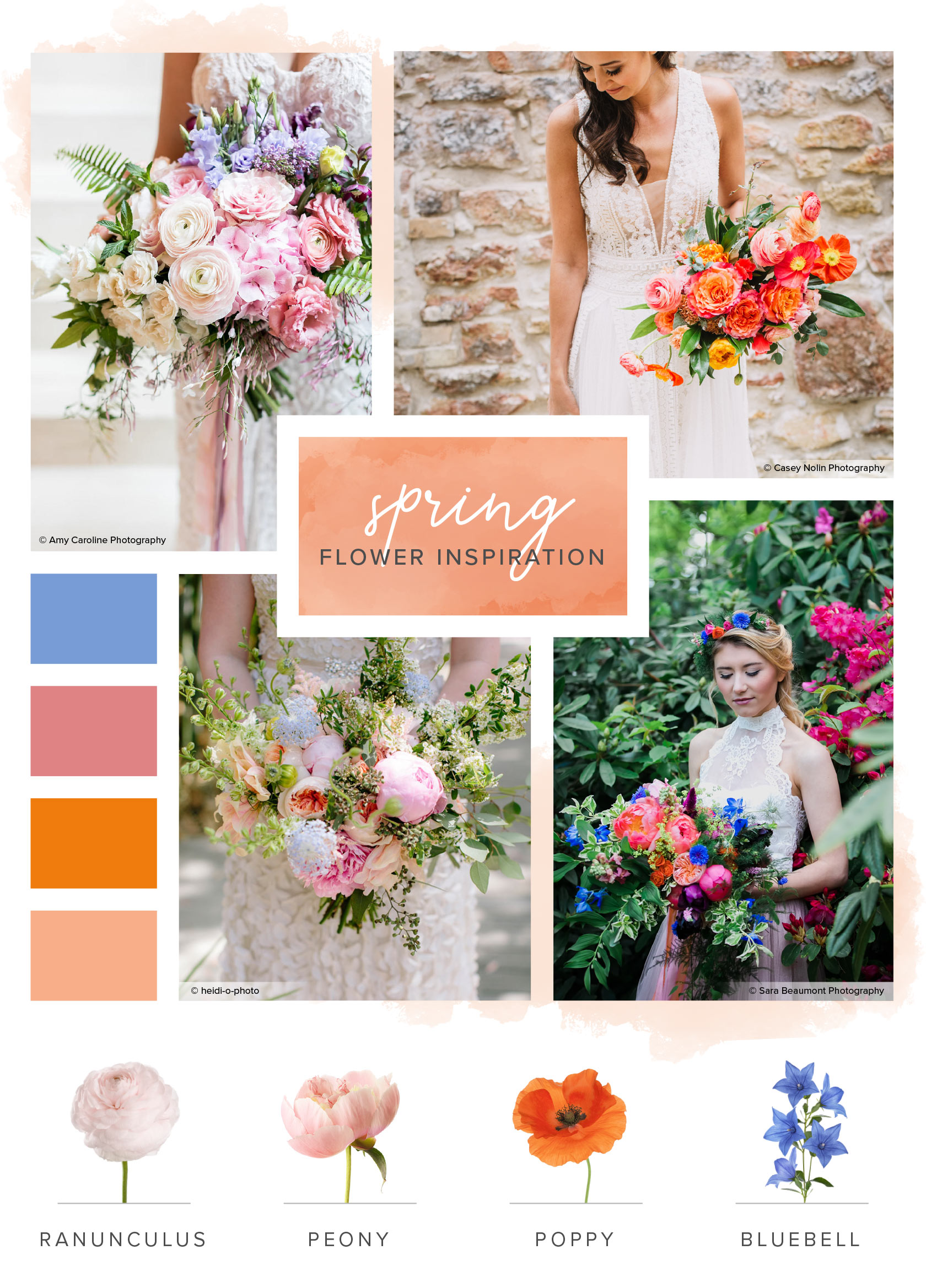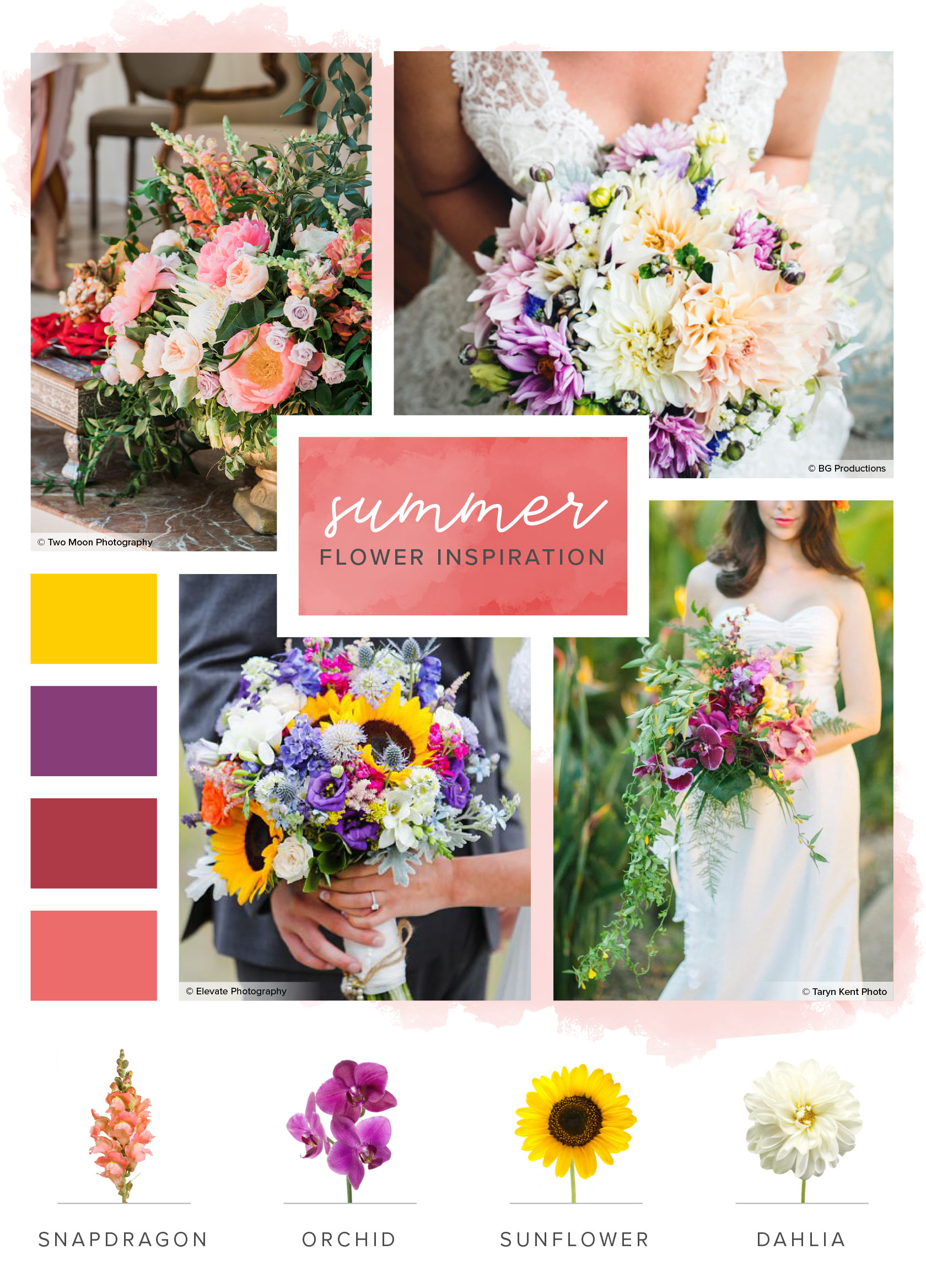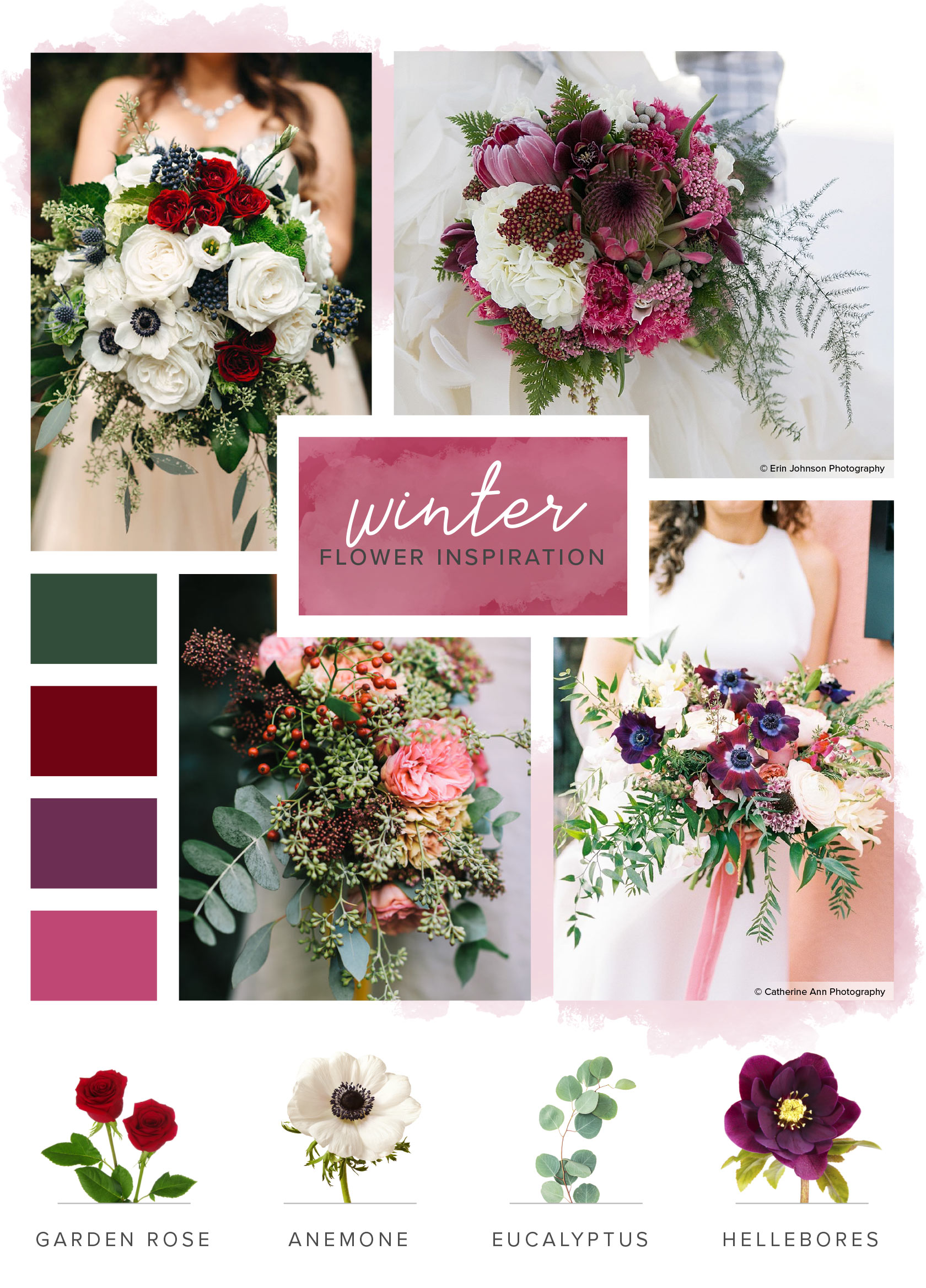- Expert advice/
- Venues & vendors/
- Florists & flowers/
- The Complete Guide of Wedding Flowers by Season
- Florists & flowers
The Complete Guide of Wedding Flowers by Season
Incorporating seasonal flowers into your wedding day gets you the best quality blooms for a lower price tag. This guide can help you save big on your floral budget, no matter what time of year you plan to tie the knot.
Last updated February 5, 2024
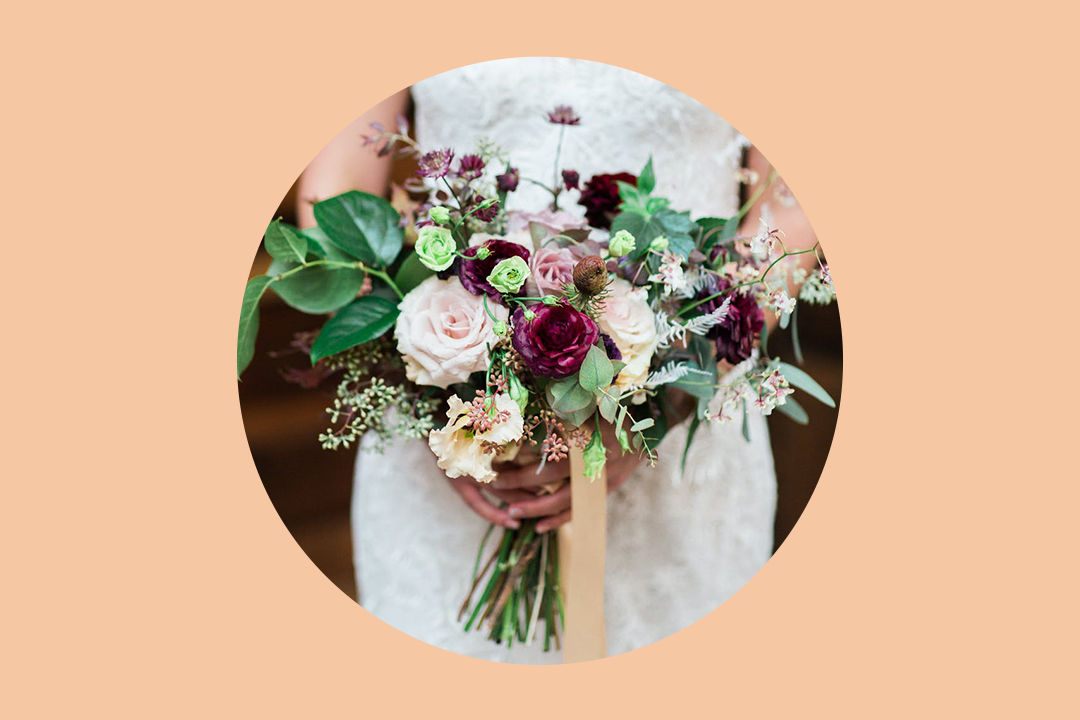
There are many costs associated with wedding planning, from your venue to invitations and beyond. One of the more costly expenses tend to be florals, with an average bridal bouquet costing $250 — and that’s before you calculate centerpieces, bouquets, boutonnieres, and other floral displays.
Benefits of Ordering In Season Flowers
Flowers add beautiful and natural notes to your wedding day. Incorporating season-specific blooms will create a trendy and authentic display that will have your guests and wedding photographer swooning.
Moreover, when you order in season flowers, your florist doesn’t have to compete with other businesses to order a flower that's in high demand. While you’ll save money on your wedding day using peak-season blooms for your wedding bouquets, centerpieces, boutonnieres, etc., keep in mind that some are more expensive than others. Year-round blooms can make perfect bouquet fillers or statement pieces during any season—especially for DIY bouquets.
That said, keep in mind that weather, climate, and other factors can impact flowering seasons. Make sure to check with your local florist on availability before you order.
- Spring Flower Inspiration
- Summer Flower Inspiration
- Fall Flower Inspiration
- Winter Flower Inspiration

Spring Flower Inspiration
As the weather slowly warms, plants begin to flower into beautiful pastel shades. It’s the perfect time of year to add in pinks, peaches, lilac, and cream into your wedding style.
Keep in mind that cold fronts and long winters can delay the flowering season, which can impact the fullness of your blooms. Touch base with your florist a few weeks before the wedding to see if you can still buy locally sourced, in-season blooms to cut down on cost.
Check out some of our favorite springtime blooms:
Ranunculus: This large petaled flower is found in a wide variety of wedding bouquets. Its petals look similar to rose petals but are extremely delicate and tissue-paper thin. Their color palette makes them perfect for any season and despite their springtime bloom, they are cheap and widely available so you can feature them all year long!
Bluebell: Bluebells are a great alternative to tulips. These intense blue bulbs grow in woodland areas and are linked with fairy enchantments in British folklore. Their deep shades make this flower a moody addition to any bouquet, perfect for a garden-inspired look. For a similar look in white, look to lily of the valley. For pinks, consider sweet pea flowers.
Poppy: Because poppies prefer cooler weather, these flowers have a short blooming season that wraps up by May. If you’re getting married in spring, this crinkly spring flower will add bright color to your bouquet. Although the petals come in many shades, the center is usually bursting with yellow, making this wildflower a perfect addition to a bouquet for a free-spirited outdoor ceremony.
Peony: Thriving in late spring, Peonies have silky, fluffy petals that come in light hues. The petals have a strong aromatic scent and they begin to burst as the warm weather moves in, making them a perfect option for a fresh springtime wedding. Pro tip: Since these can be pricy, consider using hydrangeas as a spring wedding flower alternative.
Summer Flower Inspiration
Summer weddings are an ideal time to feature bold colors and full blooms, since many flowers that began to bulb in springtime reach peak bloom during the hot summer months.
Bright, exotic floral choices are a great way to tie a summertime vibe into your ceremony. Keep in mind that all that sunshine makes heat waves and dry spells common this time of year, which can impact the blooming season of some flowers.
Here are some of our favorite warm season blooms:
Sunflowers
Sunflowers begin flowering in July and their bountiful bloom makes them extremely affordable. They’re also considered a symbol of good luck, so a sunflower wedding display will start your marriage off with positive and bright sunny vibes.
Snapdragon
Early summer is the best time to take advantage of snapdragons, which begin budding in the cool springtime. This flower is from the Mediterrannean and has fragrant petals and long stems. Snapdragons come in a wide variety of beautiful bold shades and they’re perfect to pair with larger buds such as roses, lisianthus, and peonies.
Orchid
Start your honeymoon early with this tropical stunner. While many varieties bloom year round, orchids feel especially seasonal during the sunny summer months. Their bright petals resemble butterfly wings and despite their high cost, orchids can be a practical bouquet choice given their long life span. Pair with lush greenery and bright bulbs for a lush, tropical floral design.
Dahlia
These dreamy summer flowers are bright, bold, and uniquely shaped. While they begin blooming in late May, their flowers begin to burst during the summer months into early fall. Dahlia’s large bloom, affordability, and variety make this a practical and impactful addition to your bouquet.
Fall Flower Inspiration
Flower season slows down as the crisp air moves in. Autumn sees plants and trees shed their leaves as foliage transforms into beautiful jewel-toned hues. Other seasonal touches for your floral arrangements can include twigs, feathers, and berries.
Many summer blooms continue to flower throughout early fall, so despite the changing colors autumn brings, you’ll still have tons of options to choose from. You’ll also find a rebirth of some cool-weather bulbs that resurface from spring after hiding from the summer heat.
Here are some of our favorite fall wedding flowers to add into display:
King Protea
This statement flower will steal the show at your wedding. The tropical flowering plant is South Africa’s national flower and it stuns with a heavy head, spiky petals, and a thick stem. Despite its light pink color, the uniqueness of this flower makes it the perfect addition to a moody fall bouquet.
Amaranthus
This exotic long-tailed plant has rich Aztec history and its name translates to “love lies bleeding.” With rich harvest hues such as pink, red and green, these petals hold color even when dry. The velvety flowers will look sultry and glamorous as they cascade down your wedding bouquet.
Chrysanthemum
Also called mums, this popular flower signifies autumn abundance, making it the perfect addition to your fall wedding day! Mums come in brilliant shades and offer brides tons of variety in flower shape. They're also easy to grow in the late summer season, making them an affordable bouquet addition and a great flower for fall gardens.
Delphinium
This summer bloom is still in season through October, making it a perfect addition to an early fall wedding display. There are multiple shades of petals so you can choose a more traditional autumn color or surprise your wedding guests with pops of delicate blue petals paired with more traditional fall shades.
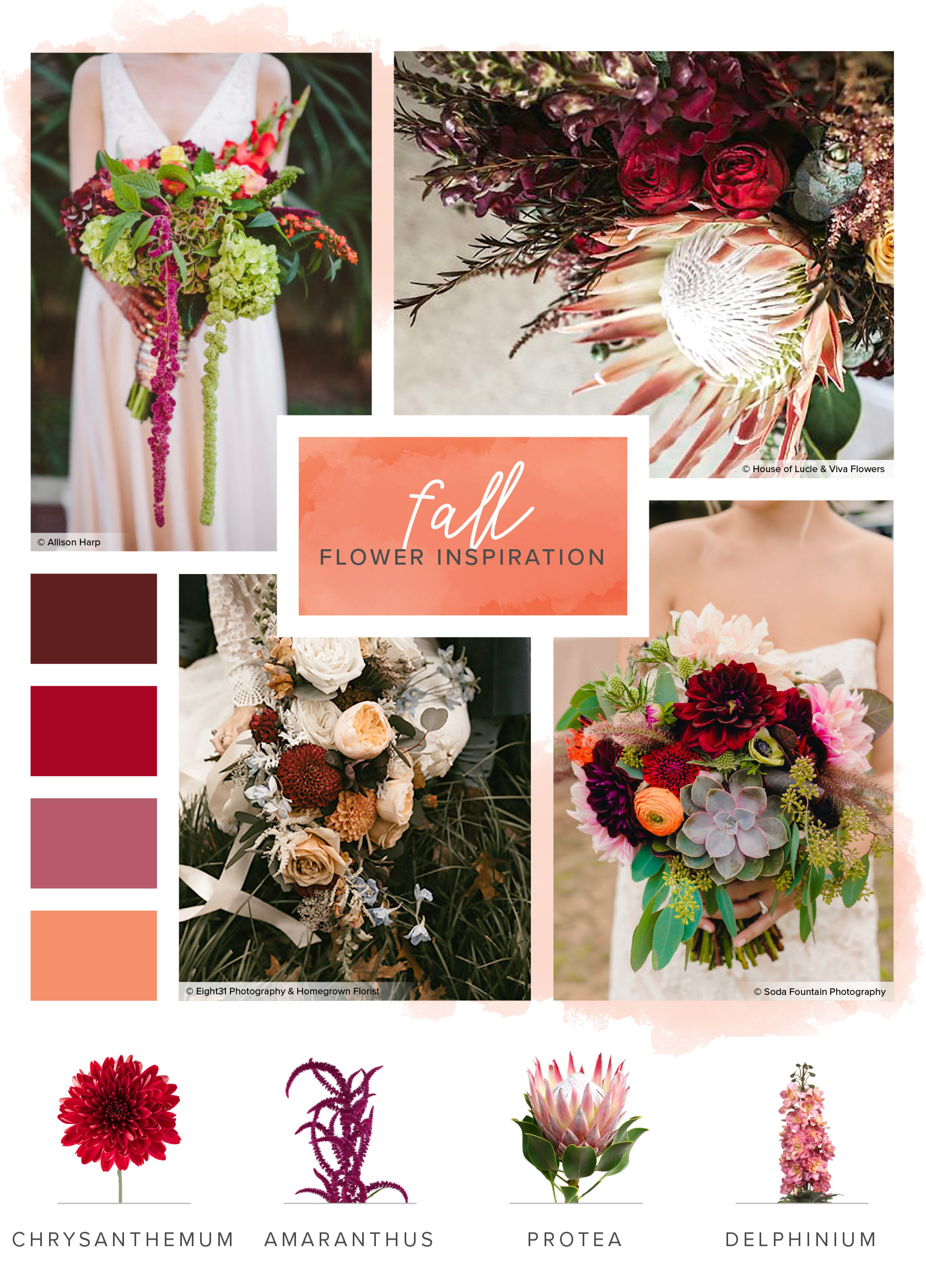
Winter Flower Inspiration
Few flowers can survive the hard frost of wintertime. Celebrate the strong stems that bloom despite the chill by featuring them in your winter wedding!
This season is all about delicate decadence, from your wedding cake to your floral display. Try featuring neutral flowers with pops of bright red and green. You can also add in festive holiday ornamentation with features like pine cones and red berries.
Here are some lovely and sturdy winter wedding flower options:
Hellebores
Often called a Christmas rose, these flowers may bloom as early as December. Hellebores have a rich history in both Ancient Greek Mythology and Christianity. These plants’ tolerance for frost and stunning, rich petals make them an obvious choice for a dreamy winter wedding display.
Anemone
Also known as windflowers, these bulbs are a symbol of love between Adonis and Aphrodite in Greek Mythology. This along with their striking petal shades, including deep plum, make them a perfect choice for a winter wedding.
Eucalyptus
Delicate greenery has been really popular in wedding florals over the past few years and the beautifully textured leaves of eucalyptus make this a perfect choice for a winter bouquet filler. Native to Australia, these leaves grow on trees and have a strong, aromatic scent. They look beautiful fresh or dried, so you can buy them fresh or stock up early.
Winter Garden Rose
Roses are a symbol of love and beauty, which is why they're the most popular wedding flowers. They also bloom all year round, making them a romantic and tasteful choice any season. Winter Garden Roses bloom in December, so their soft, delicate petals won’t break the bank while offering a beautiful color variety during the winter season.
A beautiful bouquet can be one of the most memorable parts of your big day. Beyond a visually stunning display, flowers (real or artificial) add natural textures and elements into your ceremony and reception, reinforcing the intrinsic nature of love and marriage.
For more wedding planning advice, stop by our Expert Advice section. We’re here to help you in every step of the wedding planning process.
- Expert advice/
- Venues & vendors/
- Florists & flowers/
- The Complete Guide of Wedding Flowers by Season
Find even more wedding ideas, inspo, tips, and tricks
We’ve got wedding planning advice on everything from save the dates to wedding cakes.
